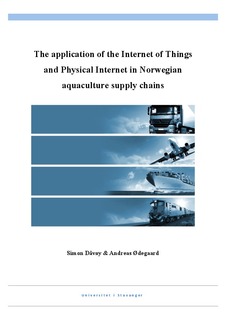| dc.description.abstract | The topic for this master thesis is Supply Chain Management within the Norwegian aquaculture industry. The thesis aims to examine how the industry can make use of aspects within the Internet of Things and Physical Internet in order to improve their supply chains.
Moreover, the thesis identifies and defines three main factors affecting the customers purchasing decision; namely quality, time, and price. These factors are interconnected, and influenced by traceability and onshore transportation.
The thesis is built upon secondary sources, using data and statistics, as well as results from questionnaires, surveys, and available information about aspects we want to illuminate.
Due to increased focus relating to regularity and flexibility in deliveries, along with food safety, quality, and documentation, the need for innovative transportation- and traceability solutions has become imperative.
As a solution to this, the thesis suggests that the Norwegian aquaculture industry can benefit from utilizing concepts from the Internet of Things and Physical Internet in their supply chains. Electronic traceability systems enable transparency and efficient communication throughout the supply chain. It provides key information about the products, which in turn facilitates better decision-making.
Next, implementing the Physical Internet in the Norwegian aquaculture industry could potentially lead to significant reductions in transportation costs- and time. This can be accomplished through utilizing smart modular π-containers, an open and interconnected logistics network, as well as enabling more intermodal transportation. Moreover, through reduced transportation costs, the industry could be able to further strengthen their competitive advantage in terms of proximity to market.
The study suggests that implementing traceability and the Physical Internet can potentially contribute in significant improvements with respect to; quality, time, and price. | nb_NO |

